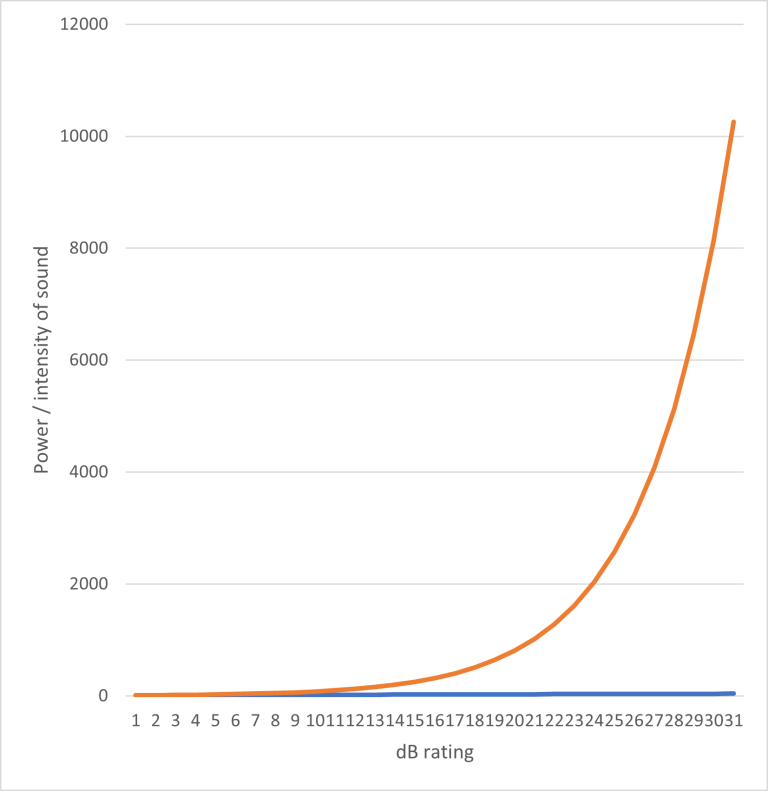Decibels (dB's) Explained
The decibel (symbol dB) is a unit of measure for volume (or amplitude) of sound. The dB tells us the energy (volume) in a sound wave. In layman’s terms its the “loudness” of sound.
Two signals whose levels differ by one dB have a power ratio of approximately 1.26. This means that every increase of 10dB on the decibel scale is equal to a 10-fold increase in sound pressure level.
A sound measured at 10dB is therefore 10x louder than a sound measured at 0dB (near silence). A sound that measures 20dB is 100x more powerful than a 10dB sound.
Below is a chart of sounds we are familiar with in the context of their dB rating:

20dB
Whispered conversation

45dB
Occupied open-plan office

50dB
Occupied classroom

65dB
Gymnasium

70dB
Factory / railway carriage

90dB
Traffic / machinery

110dB
Rock concert

120dB
Plane taking off

140dB
Gunshot
In summary, 55dB is not 10% more than 50dB. Every 3dB represents a doubling of sound intensity. This concept is illustrated in the chart below:

Contact Creatif to understand how our products help to ensure adequate dB levels are achieved in workspace environments, that suit the task that the space was designed for. Having spaces with the correct acoustic design enhances employee wellness, retention and performance.